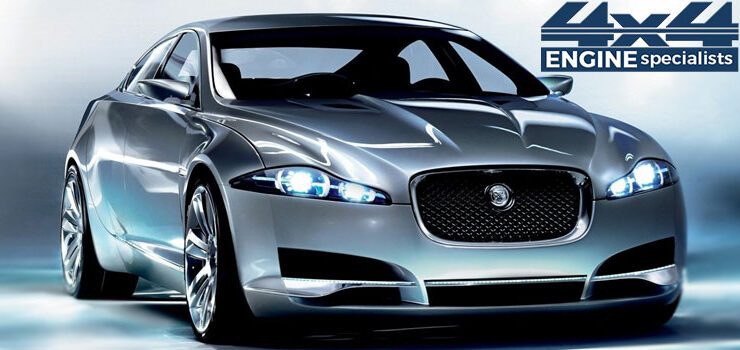The Range Rover is a luxury SUV that has been in production since 1970. It is one of the most iconic and prestigious vehicles in the world, combining off-road capability, comfort, performance and style. The Range Rover has undergone several generations of changes and improvements, but one of the most significant ones was the introduction of the Jaguar 5.0 Supercharged engine in 2010.
What is the Jaguar 5.0 Supercharged engine?
The Jaguar 5.0 Super-charged engine is a compact DOHC V8 piston engine that was designed by Jaguar Land Rover (JLR) as the first engine for both brands. It replaced the previous 4.2-liter supercharged V8 that was used in some Range Rover models. The Jaguar 5.0 Super-charged engine is available in displacements ranging from 3.2L to 5.0L, and produces up to 592 horsepower and 516 pound-feet of torque in its highest state of tune.
How does the Jaguar 5.0 Supercharged engine work?
The Jaguar 5.0 Super-charged engine uses a twin-vortex supercharger with an intercooler to boost the air intake and increase the power output. It also features direct injection, variable valve timing, cam profile switching, and a variable-length inlet manifold to optimize the combustion efficiency and performance. The engine is made of aluminum alloy for lightness and durability, and uses Nikasil-coated cylinders to reduce friction and wear.
What are the benefits of the Jaguar 5.0 Supercharged engine?
The Jaguar 5.0 Super-charged engine offers several benefits for the Range Rover, such as:
Improved performance: The engine delivers more power and torque than the previous V8, enabling faster acceleration, higher top speed, and better towing capacity.
Enhanced refinement: The engine is smoother, quieter, and more responsive than the previous V8, providing a more comfortable and enjoyable driving experience.
Reduced emissions: The engine is more fuel-efficient and environmentally friendly than the previous V8, meeting the stringent Euro 6 emission standards.
What are the challenges of the Jaguar 5.0 Super-charged engine?
The Jaguar 5.0 Super-charged engine also poses some challenges for the Range Rover, such as:
Higher cost: The engine is more expensive to produce and maintain than the previous V8, increasing the initial and ongoing costs for the owners.
Reliability issues: The engine has been reported to have some inherent problems, such as failing temperature sensors, cracked plastic tubes and thermostat housing, failing water pump, and timing chain snapping. These issues can cause engine failures and require costly repairs.
Competition: The engine faces competition from other luxury SUVs that use similar or superior engines, such as the BMW N63 twin-turbo V8 that is replacing the Jaguar 5.0 Super-charged engine in some Range Rover models.
How has the Jaguar 5.0 Supercharged engine evolved over time?
The Jaguar 5.0 Super-charged engine has evolved over time to meet the changing needs and expectations of Range Rover customers. Some of the notable evolutions are:
In 2012, JLR introduced a new version of the engine with a higher compression ratio, revised pistons, new injectors, and a redesigned supercharger that increased the power output to 510 horsepower and 461 pound-feet of torque.
In 2014, JLR launched a special edition of the Range Rover Sport SVR that used a modified version of the engine with a larger supercharger pulley, revised intake system, new intercooler, and recalibrated software that boosted the power output to 550 horsepower and 502 pound-feet of torque.
In 2017, JLR unveiled a limited-edition of the Jaguar XE SV Project 8 that used a further enhanced version of the engine with new pistons, rods, crankshaft, bearings, valves, springs, cams, exhaust system, and software that increased the power output to 592 horsepower and 516 pound-feet of torque.
What are the future prospects of the Jaguar 5.0 Supercharged engine?
The future prospects of the Jaguar 5.0 Super-charged engine are uncertain at this point. JLR has announced that it will move the production of the engine in-house from Ford’s Bridgend plant in Wales to its own Wolverhampton plant in England by September 2020. However, JLR has also confirmed that it will use BMW’s N63 twin-turbo V8 engine in some of its future models, such as the new-gen Range Rover P530 and the top-end Defender. JLR has not revealed whether it will continue to develop and use the Jaguar 5.0 Super-charged engine in its other models, or whether it will phase it out completely.
What are the alternatives to the Jaguar 5.0 Supercharged engine?
The alternatives to the Jaguar 5.0 Super-charged engine are the other engines that are available in the Range Rover lineup, such as:
The 3.0-liter V6 supercharged engine that produces 340 horsepower and 332 pound-feet of torque.
The 3.0-liter V6 turbodiesel engine that produces 254 horsepower and 443 pound-feet of torque.
The 2.0-liter I4 plug-in hybrid engine that produces 398 horsepower and 472 pound-feet of torque combined with an electric motor.
The BMW N63 twin-turbo V8 engine that produces 530 horsepower and 553 pound-feet of torque.
What are the customer reviews of the Jaguar 5.0 Supercharged engine?
The customer reviews of the Jaguar 5.0 Supercharged engine are mixed, with some praising its performance, refinement, and sound, and others criticizing its reliability, cost, and emissions. Some examples of customer reviews are:
The Jaguar 5.0 Super-charged engine is a beast. It makes the Range Rover fly like a rocket and roar like a lion. It is smooth, responsive, and exhilarating to drive. I love it.
The Jaguar 5.0 Super-charged engine is a nightmare. It has given me nothing but trouble since I bought it. It has leaked coolant, overheated, broken down, and cost me a fortune in repairs. I hate it. More information about range rover visit us at https://4x4enginespecialists.co.uk/ .
FAQs
How much does the Jaguar 5.0 Super-charged engine cost?
The Jaguar 5.0 Super-charged engine costs around $20,000 to $25,000 more than the base V6 engine, depending on the model and trim level.
How much fuel does the Jaguar 5.0 Super-charged engine consume?
The Jaguar 5.0 Super-charged engine consumes around 16 mpg in the city and 21 mpg on the highway, according to EPA estimates.
How long does the Jaguar 5.0 Super-charged engine last?
The Jaguar 5.0 Super-charged engine can last up to 150,000 miles or more if properly maintained and serviced.
How often does the Jaguar 5.0 Super-charged engine need service?
The Jaguar 5.0 Super-charged engine needs service every 10,000 miles or once a year, whichever comes first.
How can I improve the performance of the Jaguar 5.0 Super-charged engine?
You can improve the performance of the Jaguar 5.0 Super-charged engine by installing aftermarket parts and accessories, such as a larger supercharger pulley, a cold air intake, a performance exhaust system, a tune-up kit, etc.


